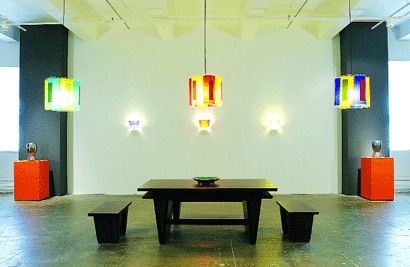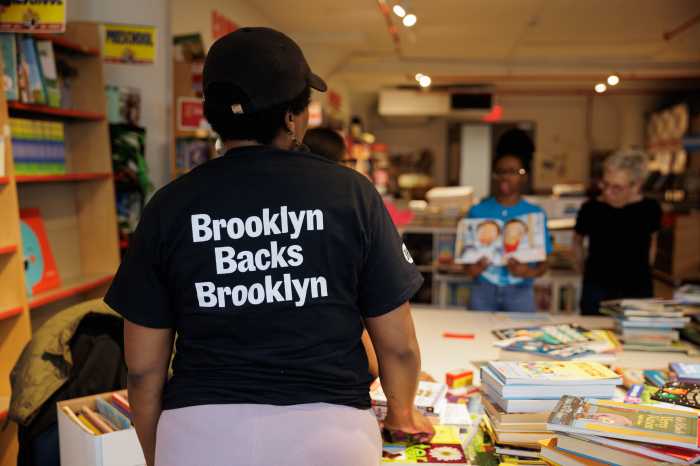Thomas Schutte explores architectural themes of masculinity with wit
Thomas Schutte is an eminent German artist who shows frequently in Europe; this week, one of his sculptures was awarded a Golden Lion at the Venice Biennale. His last major exhibition in the U.S. was a three-part survey held at Dia Art Foundation from 1998 through 2000. Schutte’s investigation of the sculptor as part visionary and part technician has led him to create sculptural forms that often refer to theatrical props or architectural models.
Such is the case in his current show. Each of Schutte’s “One Man Houses,” created between 2003 and 2005, is a unique architectural conceit. Constructed of simple, industrially-produced materials such as plywood, lathe, and Plexiglas, their scale is 1:5. They rise one by one above their packing crate pedestals and fill the gallery like a colony of oversized dollhouses. A striking architectural motif that recurs is an immense circular form set into the side or top of the models. It protrudes half in and half out, like the gasket of a drum or one segment of an enormous bamboo steamer.
Elevated to waist height by the packing crates, the interiors are quite roomy. Stairs and skylights figure prominently. Light and space are priorities. Extravagantly high in proportion to floor space, the basic areas that constitute a house––living room, study, kitchen, bathroom––are presented on three levels. While a select repertoire of furnishings is schematically indicated––desk, table, bed––there are no personal effects. No garbage to take out, no grass to cut. Variously suggesting bachelor pad, prison cell or luxury loft, the “One Man Houses” are meant as real architectural models for one-man men.
The earliest house, dated 2003, is quite different from the other five. This complex of small structures made of tin resembles a barracks, or even a display of antique cameras. Each dwelling is fitted with colored plexi doors and windows that don’t open. The ensemble sits on a mirrored surface.
Don’t miss the south gallery. Schutte has fitted it up as a living room, complete with table, lamps, vases and other furniture at full scale. But––surprise––all of these handsomely crafted objects are actually editioned sculptures, including a set of stencils used to decorate the walls with a manly floral motif.
Schutte’s practice is clearly grounded in Bauhaus precepts of European modernism. However, belonging to a generation of artists coming up during the 1980s, he smartly positioned his work in relation to the Minimalist notion that the viewer’s physicality, intellect and emotion are complicit with sculpture and its presentation. Many artists of that era energized their work with a sense of danger or paranoia; instead, Schutte risks engaging the viewer’s sense of humor. In this exhibition, some thoughtful ideas about masculinity and solitude are offered with wit and style.
gaycitynews.com



































